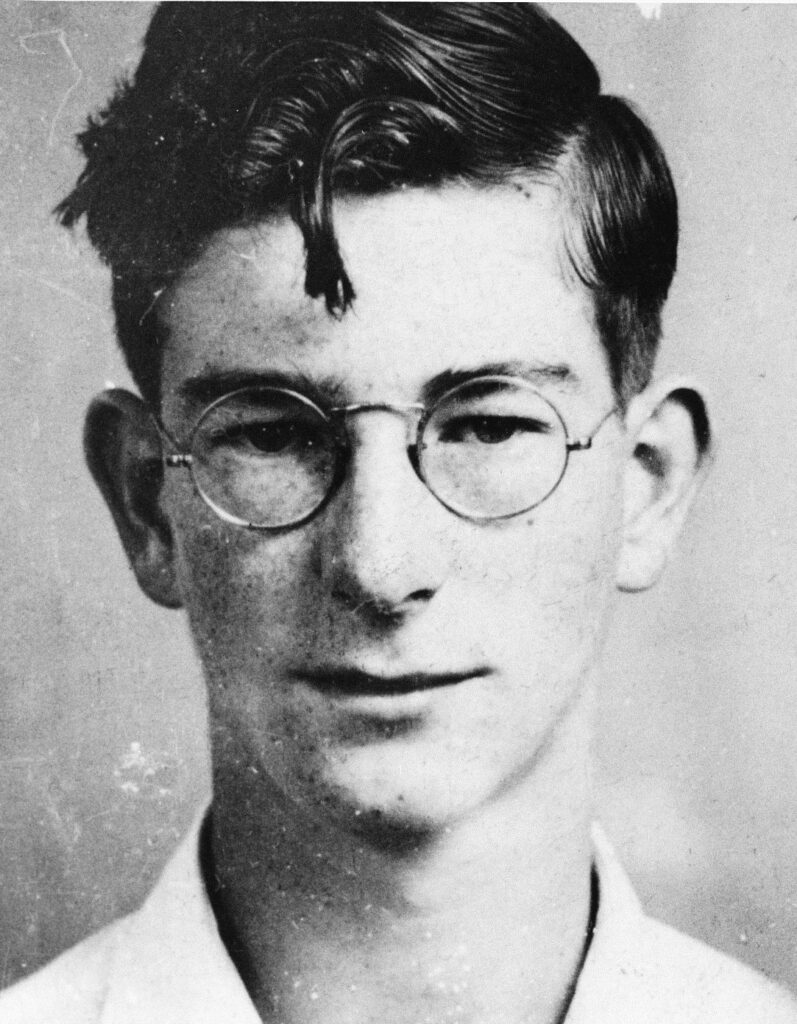Robert Burns Woodward
A consummate master of synthetic organic chemistry, Woodward applied an uncanny intuitive sense of what was possible in the molecular world, as if he lived there part of the time. His most complex synthesis was of vitamin B12.

Robert Burns Woodward (1917–1979) planned syntheses more systematically than anyone ever had before him. He combined this intuitive mastery and systematic approach with incorporation of the latest theories on molecular structure and reaction mechanisms and use of the most modern analytical instrumentation.
Woodward was born in Boston. His father died the following year, and although his mother remarried, she was soon abandoned by her second husband and left to bring up her son in straitened circumstances. When Woodward was eight years old, he received a chemistry set, which he improved by adding more reagents and gathering other instructions, including those gleaned from a college-level textbook.

An MIT Education
When he enrolled at the Massachusetts Institute of Technology (MIT) in 1933 at the age of 16, Woodward knew as much organic chemistry as a college senior. After a promising freshman year he was given his own small laboratory. Then he almost forfeited his opportunities by skipping chemistry classes and neglecting other subjects.
At the end of the first semester of his sophomore year he was asked to withdraw from college. He spent a semester as an employee of the MIT biology department and was then permitted to reenroll. In just four years Woodward completed both his bachelor’s degree and his doctorate.
A Position at Harvard
After teaching summer school at the University of Illinois he went to Harvard University to take a position as a research assistant in the chemistry department. He remained there for the rest of his career, progressing through the usual academic ranks to two prestigious endowed chairs.
While a faculty member, he also served as a consultant to a number of companies, most enduringly the pharmaceutical companies Pfizer and CIBA-Geigy.
Molecular Syntheses and a Nobel Prize
During World War II, Woodward participated in war-related research on two drugs that were in short supply, quinine and the new “wonder drug” penicillin. Neither of these endeavors resulted in a synthesis that could be scaled up to produce the necessary quantities, but he developed approaches and understandings that in the long run helped him become the creator of the most famous syntheses ever.
After the war Woodward conducted a succession of analyses and syntheses of increasingly complicated molecules, including cholesterol, cortisone, lysergic acid (LSD), strychnine, reserpine, and chlorophyll. On the basis of these feats he was awarded the Nobel Prize in Chemistry in 1965 for “outstanding achievements in the art of organic synthesis.”
Synthesis of Vitamin B12

Vitamin B12 was Woodward’s most complex synthesis. This vitamin, part of the B complex, is essential for the normal functioning of the human body; without B12 pernicious anemia develops. The experiments were done partly in the Harvard laboratories and partly with the collaboration of Albert Eschenmoser at the Eidgenössische Technische Hochschule in Zurich, Switzerland.
The synthesis began in 1960, a few years after Dorothy Hodgkin had determined the vitamin’s structure by X-ray crystallography. The synthesis took over a dozen years and involved about 100 people from 20 nations—mainly ever-changing populations of postdoctoral students—working in the two research groups.
Woodward-Hoffmann Rules
The B12 synthesis was also an outstanding example of the role of natural-products synthesis in generating fundamental knowledge in organic chemistry. A key reaction in the multistep synthesis of vitamin B12 proceeded in a way not predicted by Woodward. This totally unanticipated result and several other previously inexplicable reactions ultimately led to the formulation of the Woodward-Hoffmann rules. These rules permit chemists to predict, for example, the products that form when two compounds are activated by heat compared with the distinct products that form when the same two compounds are activated by light.
For his contribution to this work Roald Hoffmann received the 1981 Nobel Prize in Chemistry (shared with Kenichi Fukui, a chemist working in Japan, who developed a different way of analyzing chemical interactions that could explain the same chemical changes). Woodward died before the Nobel award was given; had he been alive, there is little doubt that he would have shared the award.



